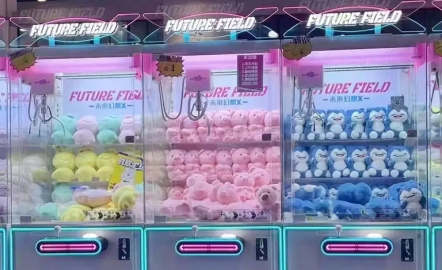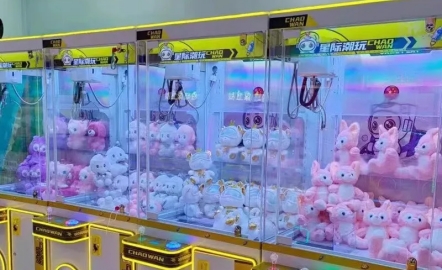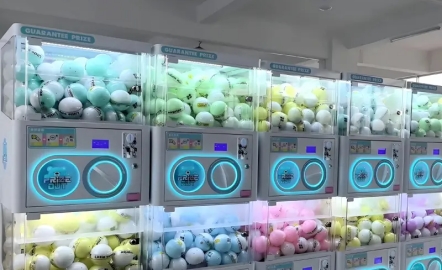Global Popularity and Regional Variations
Claw machines, known as "UFO catchers" in Japan and "skill cranes" in North America, reflect cultural attitudes toward play. In China, 90% of shopping malls feature "claw machine zones" with plush toys depicting local cartoon IPs like "Boonie Bears." Conversely, European venues favor skill-based redemption games, where children earn points for books or art supplies—a nod to stricter regulations on "prize" definitions.
Social Dynamics and Peer Interaction
Observational studies in Australian arcades reveal that group play at claw machines fosters teamwork. Children often strategize together, pooling coins and assigning roles (e.g., one controls the joystick, another times the button press). This cooperative element contrasts with solitary digital gaming, offering offline socialization opportunities.
Parent-Child Bonding
A 2023 survey by Family Entertainment Association shows that 62% of parents use claw machine sessions to teach resilience. Phrases like "Let’s try one more time!" turn losses into lessons about perseverance. Some machines even include dual controls for parent-child collaboration, strengthening emotional bonds through shared challenges.
Controversies and Solutions
Critics highlight addiction risks, citing cases where children spent over $100 in unsupervised sessions. In response, companies like Smart Industries embed facial recognition to pause gameplay after 10 consecutive attempts. Additionally, charity-integrated machines donate a portion of earnings to children's hospitals, reframing spending as altruistic acts.
Conclusion
Far from being mere distractions, claw machines and coin-operated games shape childhood experiences through cultural narratives, social learning, and ethical innovation. As society redefines play in the digital age, these devices serve as bridges between entertainment and meaningful development.
 The Cultural Impact of Claw Machines on Childhood Development
The Cultural Impact of Claw Machines on Childhood Development
 Designing Child-Friendly Coin-Operated Devices: A Focus on Ergonomics and Education
Designing Child-Friendly Coin-Operated Devices: A Focus on Ergonomics and Education
 The Evolution of Claw Machines and Coin-Operated Games in Children's Entertainment
The Evolution of Claw Machines and Coin-Operated Games in Children's Entertainment